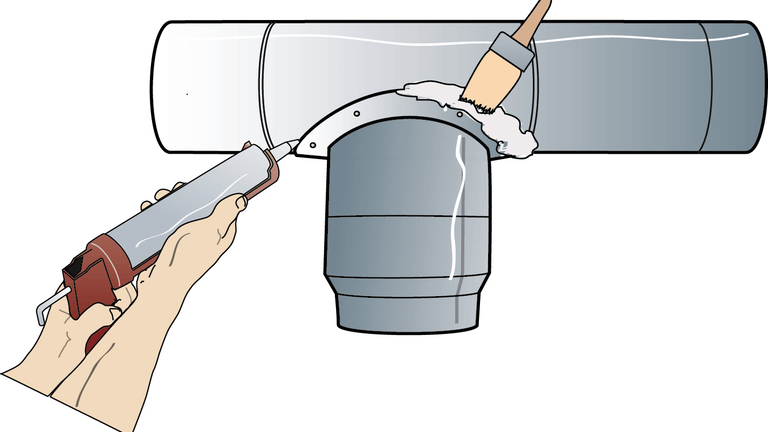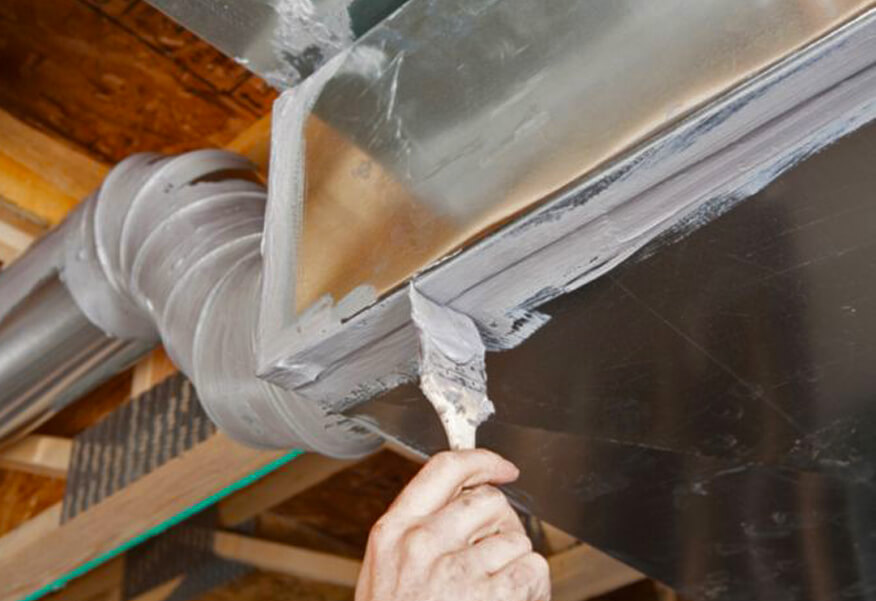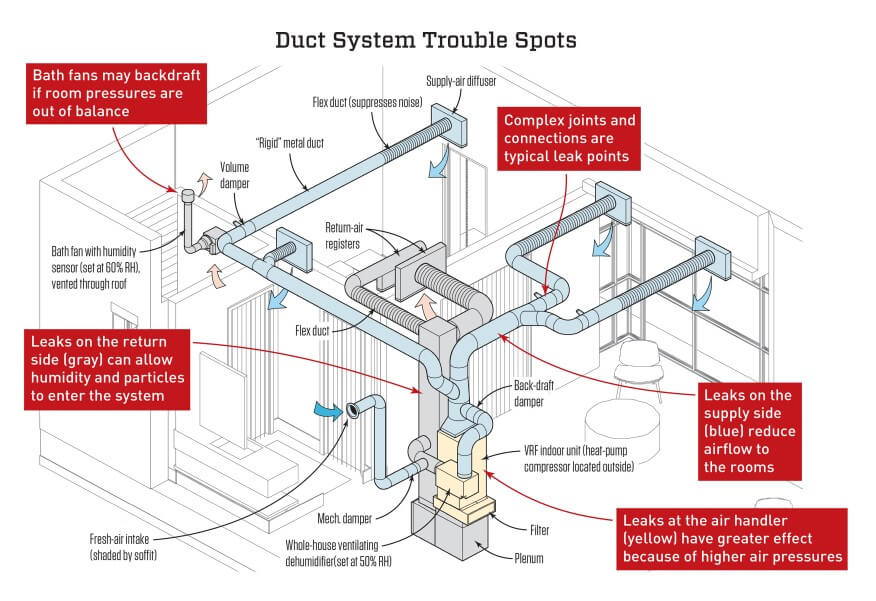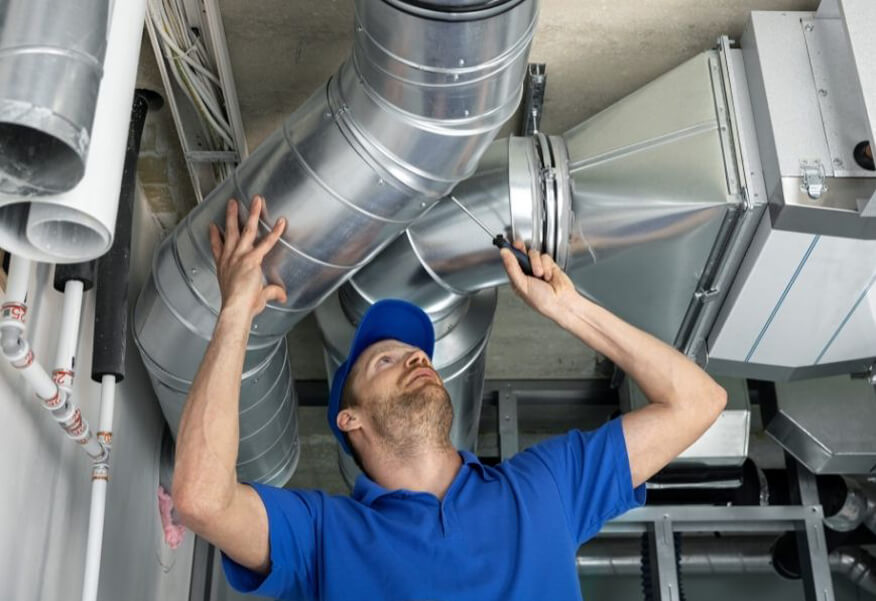Did you know that about 30 cents out of every dollar that you spend on your heating and cooling bills is actually lost to leaks in your ductwork? We conduct energy efficiency tests such as a duct leakage test to find and fix leaky ducts and determine where leaks may be occurring throughout the ductwork in an air conditioning system.
For the duct leakage test we tape over all of the air conditioning vents and also seal off the intake vent and attach the duct blaster fan to it or the air handler itself. This is all done so we can pressurize the duct system to 25 Pascal’s which is roughly equal to about a 10 mile per hour wind speed.
You don’t have to worry about the ducts being damaged from this test because the ducts are actually built at the factory to withstand much higher pressures. This is about the same pressure as the system itself exerts on the ducts when your furnace or air conditioner is operating on average.
Now after we get the pressure equalized then we can take a reading that will tell us how many cubic feet of air per minute is lost out of the system. On average over 30 percent of the system’s capacity is just being lost through leaks in the ductwork. Finiding and fixing leaky ducts can have a great effect on energy savings and home comfort. Once we pressurize a system we can actually feel and see where some of the leaks are. One of the most important leaks that you have in a system is the closest to the air handler itself because it’s under the highest pressure. We lose the most energy at the highest pressure areas.
One method to find leaks is to use a smoke generator in order to visually see where the leaks are. Once we pressurized the duct system the smoke and air will go towards the area of lower pressure and we’ll see smoke blowing out which means that we’re losing conditioned air. Now if the furnace is located in a basement or garage or maybe even in an attic it would mean that that lost air would be lost to the outdoors forever. You may actually be paying to heat and cool the outdoors!
To correct this problem we simply seal off the leaks with aluminum tape or a type of mastic made to seal joints and connections in ductwork. Now we want to be sure not to permanently seal areas where the air conditioner might need to be serviced later. When we seal thesnap joint we use mastic and apply a liberal coat to all areas where the flexible ductwork comes in contact with the metal. One way we can tell if the duct is leaking is to simply look for any nearby insulation that’s darker discolored. The insulation next to a leaky duct will act like an air filter and collect dirt and become discolored. Once you find the duct leakage you can go on to fix leaky ducts.





